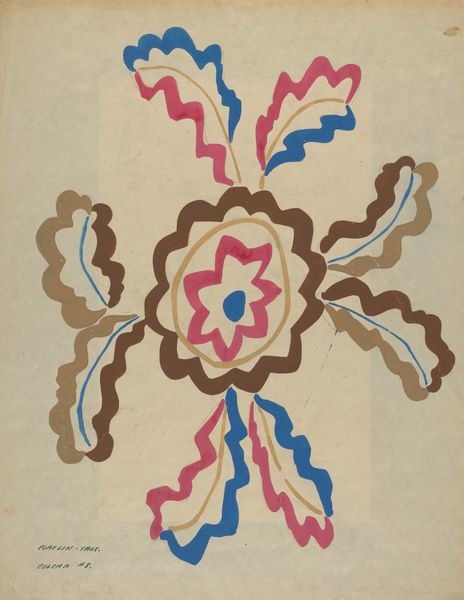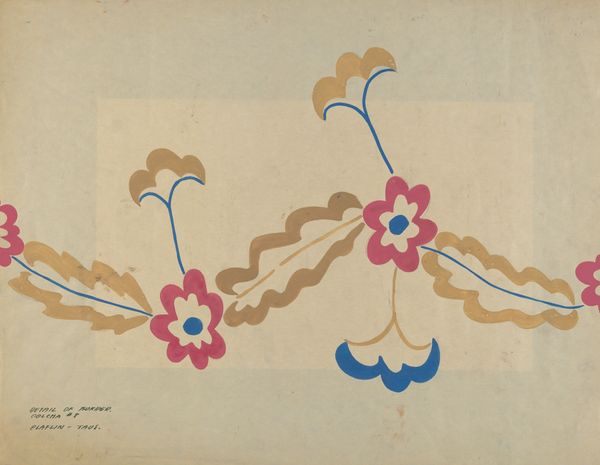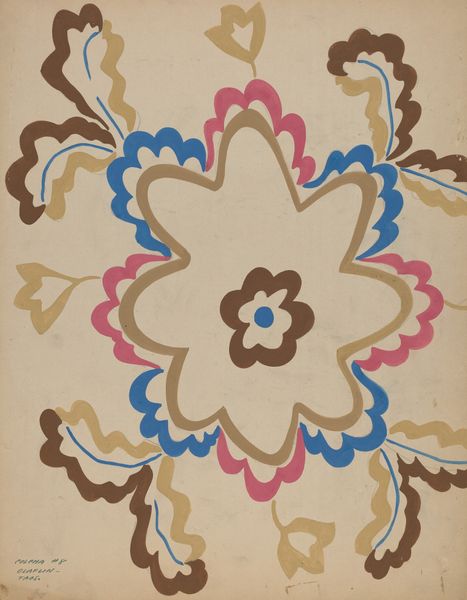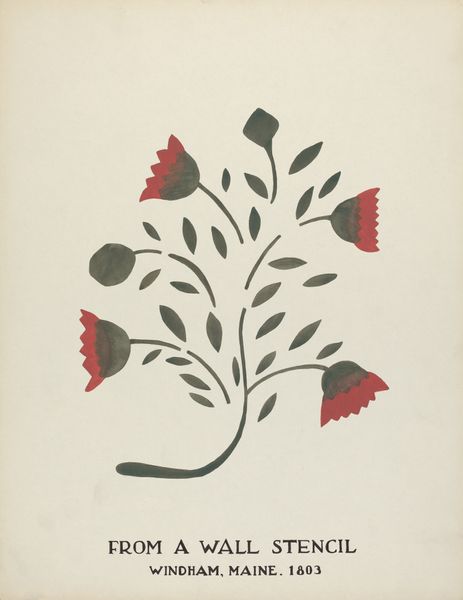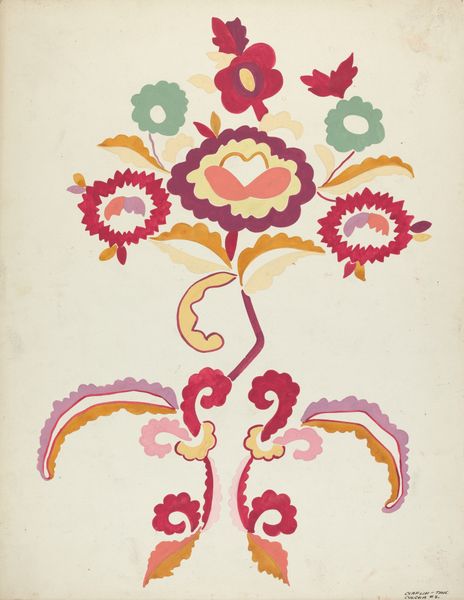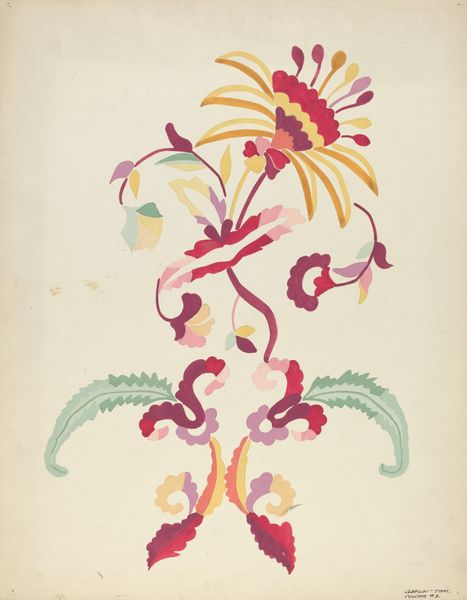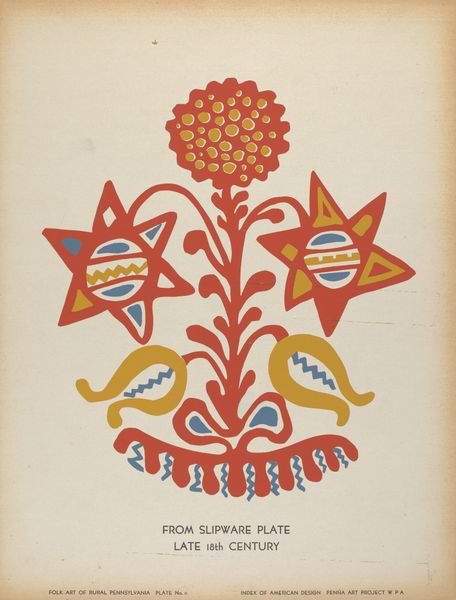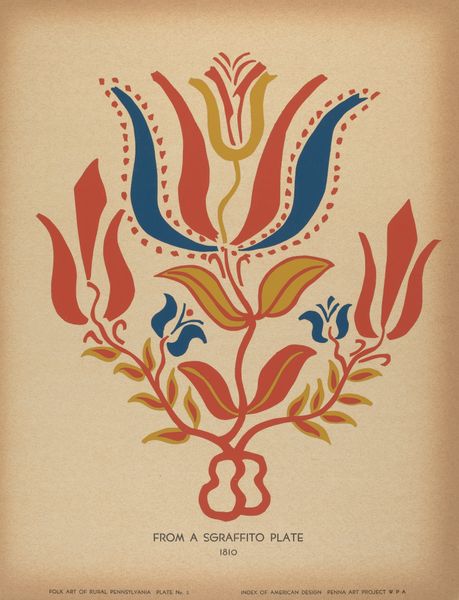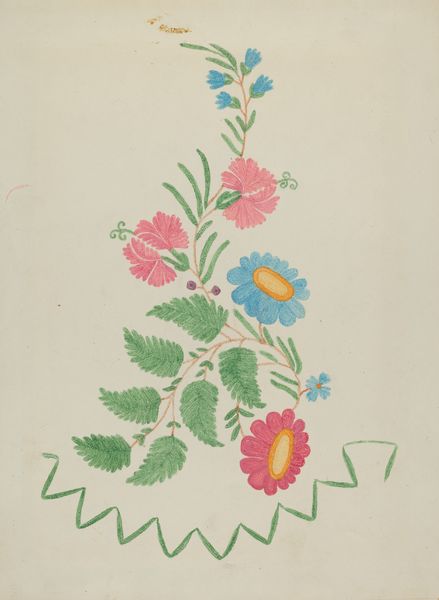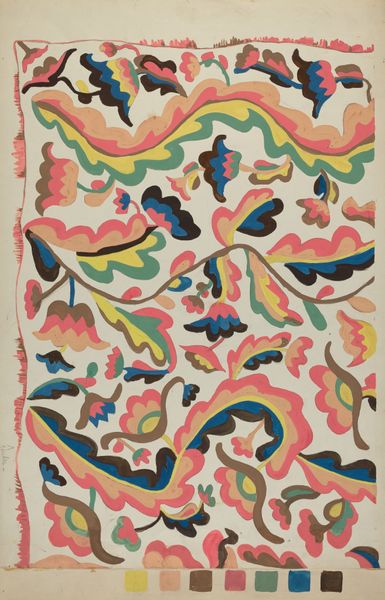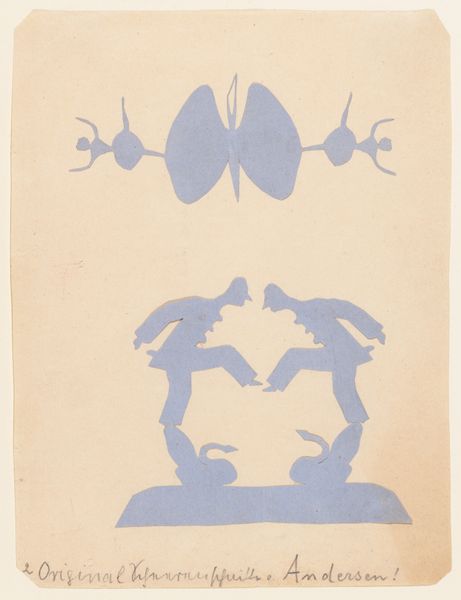
drawing, paper, watercolor
#
drawing
#
water colours
#
pastel colours
#
paper
#
watercolor
#
geometric
#
abstraction
#
watercolour illustration
#
watercolor
Dimensions: overall: 45.4 x 36 cm (17 7/8 x 14 3/16 in.)
Copyright: National Gallery of Art: CC0 1.0
Curator: Welcome. We’re looking at “Colcha,” a watercolor and pastel drawing on paper by Majel G. Claflin, created sometime between 1935 and 1942. It presents a stylized floral design with geometric elements. Editor: It strikes me as unexpectedly bold. Given the era, I anticipated something more realistic. There’s an appealing simplicity here. Curator: Claflin was deeply involved in the New Mexico art scene during this period, engaging with both Native American and Hispanic artistic traditions, as well as modern abstraction. We can view "Colcha" in this context, as possibly reflective of that interaction. Editor: Absolutely. The piece seems to resonate with regional textile traditions and folk art while also nodding towards Art Deco’s simplified forms and bold color palettes. Curator: Right. It's thought Claflin likely designed patterns such as this, potentially for use in rugs or quilts—industries with significant socio-economic importance in New Mexico at the time, particularly for women. These designs enabled access to resources within certain communities. Editor: And this rendering in watercolor, these abstracted shapes and unusual color choices – brown, pink and blue – it could be a bold step, signaling empowerment. This seemingly straightforward design touches on questions of cultural preservation and representation. How do you think Claflin positioned herself in relation to these traditions? Curator: It is a fascinating question. On the one hand, one could perceive an exchange, even an homage. Yet, equally one could inquire whether it could possibly signal cultural appropriation. Claflin was an Anglo-American artist engaging with traditions from specific communities to create artworks whose function or reception history we still don't quite grasp. Editor: Precisely! It's not just about aesthetics. It's also about agency, cultural dialogue, and acknowledging the complicated exchange in the Southwestern art world at the time. There’s so much implied, layered, and hidden here. Curator: Agreed. "Colcha" opens so many lines of inquiry. Perhaps visitors might consider where these conversations are situated in the world today. Editor: Well said! It is an unassuming image packed with questions around creativity, influence, and access, making it ever so timely.
Comments
No comments
Be the first to comment and join the conversation on the ultimate creative platform.
